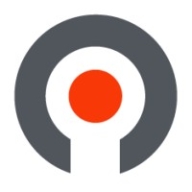

Zapier and Declarative Webhooks are competing in workflow automation. Declarative Webhooks holds an advantage with advanced customization, despite its higher price.
Features: Zapier offers third-party integrations, pre-built connectors, and seamless automation. Declarative Webhooks provides robust customization, precise data control, and superior customization for complex automation.
Ease of Deployment and Customer Service: Zapier has a straightforward deployment process, extensive documentation, and strong support channels. Declarative Webhooks requires a steeper learning curve for its complex features but offers comprehensive control.
Pricing and ROI: Zapier's flexible pricing tiers target businesses seeking standard automation and quicker ROI. Declarative Webhooks, although priced higher, gives long-term value for those investing in time and resources to master its capabilities.

Declarative Webhooks provide a streamlined approach to managing webhooks with minimal manual intervention. This innovation allows businesses to focus on leveraging existing data flows effectively.
Declarative Webhooks give developers a sophisticated tool to define and execute webhook integrations without extensive coding. By using a declarative approach, it reduces complexity in managing real-time communication and enhances system interoperability. This is ideal for fast-paced environments where real-time data exchange is essential. Simplifying integration tasks helps businesses minimize delays and operational overhead, ensuring a more seamless workflow and timely data processing.
What are the key features of Declarative Webhooks?In financial services, Declarative Webhooks facilitate secure and quick transaction processing, ensuring compliance with industry standards. Healthcare providers use it to exchange patient data securely in real time, supporting faster decision-making and improving patient outcomes. In e-commerce, it handles order processing and inventory updates efficiently, contributing to a better customer experience.
Zapier is a tool for primarily non-technical users to connect together web apps.
An integration between two apps is called a Zap. A Zap is made up of a Trigger and one or more Actions or Searches.
Whenever the trigger happens in one app, Zapier will automatically perform the actions or searches in another app in order.
Zaps are very lightweight and easy to set up. Zaps do not import or export old data (they only operate on new items created after the Zap is enabled). Zaps are also not kept in sync ("two way syncing") after the Zap is triggered.
Zaps are deceivingly simple if you're used to dealing with complex and difficult integrations. Their simplicity is what enables anyone to create them.
We monitor all Cloud Data Integration reviews to prevent fraudulent reviews and keep review quality high. We do not post reviews by company employees or direct competitors. We validate each review for authenticity via cross-reference with LinkedIn, and personal follow-up with the reviewer when necessary.